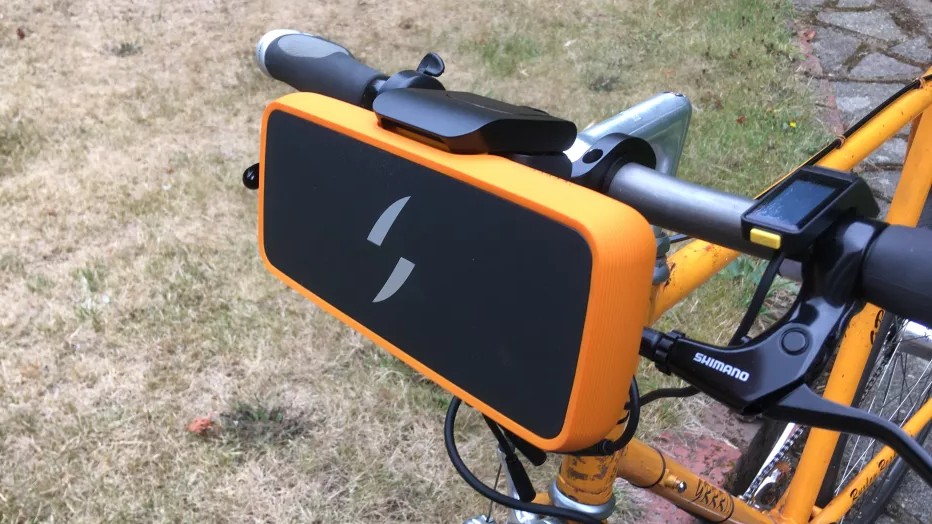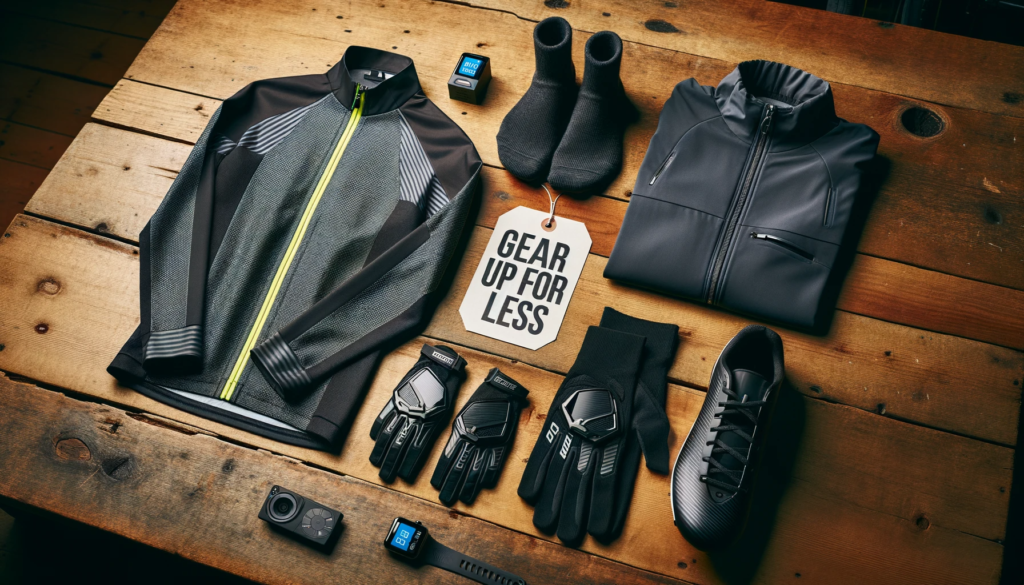Converting a normal bicycle into an electric bicycle requires attaching an electric motor and battery system. It involves mounting the motor on the bike’s frame and connecting it to the pedals or wheels, as well as installing a battery and controller for power and speed control.
This process allows the bike to be propelled by both pedaling and the electric motor, providing an assisted boost for easier and faster riding. By following this method, you can transform your regular bicycle into an electric one, offering an efficient and eco-friendly transportation alternative.

Credit: www.bikeradar.com
2. Choosing The Right Components
Converting a normal bicycle into an electric bicycle requires careful selection of the right components. To ensure a successful conversion, you need to consider three crucial elements: the motor, the battery, and the necessary electrical components. In this section, we will delve into the specifics of choosing each component for your electric bike.
2.1 Selecting An Appropriate Motor
The motor is the heart of an electric bicycle conversion. It determines the power and performance of your electric bike. When selecting a motor, consider factors such as wattage, voltage, and compatibility with your bicycle. Here are a few tips to help you choose the right motor:
- Consider the power requirement for your specific needs. If you plan to ride mostly on flat terrain, a lower wattage motor may suffice. However, if you live in an area with steep hills or intend to carry heavy loads, opt for a higher wattage motor for better performance.
- Ensure that the motor voltage matches your battery’s voltage. Mismatched voltages can lead to compatibility issues and affect the overall efficiency of your electric bike.
- Research motor brands and read customer reviews to gauge durability and reliability. Look for motors that have a good track record and are known for their quality performance.
2.2 Choosing The Right Battery
The battery is another critical component when converting a bicycle to electric. It provides the necessary energy to power the motor. To choose the right battery for your electric bike, keep the following points in mind:
- Consider the battery capacity (measured in ampere-hours or Ah) and voltage. Higher capacity batteries will provide a longer range, but they may also be heavier. Balance your range requirements with the weight you are comfortable with.
- Choose a battery chemistry that suits your needs. Common options include lithium-ion (Li-ion), lithium-polymer (LiPo), and lead-acid batteries. Li-ion and LiPo batteries are generally the preferred choices due to their higher energy density and longer lifespan.
- Ensure that the battery is compatible with your chosen motor and electrical system. Check the voltage and connector type to avoid any compatibility issues during installation.
2.3 Necessary Electrical Components For The Conversion
In addition to the motor and battery, several electrical components are crucial for a successful conversion. These components include:
- A controller: This device manages the flow of power from the battery to the motor. Choose a controller that is compatible with your motor and has the necessary features, such as regenerative braking or throttle control.
- A throttle: A throttle allows you to control the speed of your electric bike. There are various types available, including thumb throttles and twist throttles. Select one that suits your riding style and comfort.
- Wiring and connectors: High-quality wiring and connectors are essential to ensure reliable and safe electrical connections within your electric bike. Make sure to use appropriate gauges and connectors suitable for the voltage and current requirements of your setup.
- Brake sensors: Brake sensors cut off power to the motor when you engage the brakes, ensuring safety and extending battery life. Choose sensors that are compatible with your brake system and easy to install.
By carefully selecting the right motor, battery, and necessary electrical components, you can create a high-performing electric bicycle that meets your specific requirements. The correct components will ensure a smooth and enjoyable riding experience, so take your time and choose wisely!

Credit: www.popsci.com
3. Converting The Bicycle
Learn how to transform your ordinary bicycle into an electric one with these step-by-step instructions. Enjoy the benefits of effortless riding while being eco-friendly.
Now that you have gathered all the necessary components for your electric bicycle, it’s time to convert your regular bicycle into an electric powerhouse. This process involves removing unnecessary parts, installing the motor, mounting the battery and other components, and finally wiring and connection.
3.1 Removing Unnecessary Parts
The first step in converting your bicycle is to remove any unnecessary parts that may hinder the installation of the electric components. These parts typically include the front and rear derailleurs, chainrings, and the shifters. Removing these parts will create a clean space to accommodate the motor and battery.
Here is a quick guide on how to remove these parts:
- Start by flipping your bicycle upside down and securing it to a work stand.
- Use the appropriate tools to disconnect the cables connected to the front and rear derailleurs. Once detached, remove the derailleurs from the frame.
- Next, remove the chainrings by loosening the bolts that hold them in place. Take care not to damage the chainrings during removal.
- Finally, detach the shifters from the handlebars by loosening the clamps or screws that secure them.
3.2 Installing The Motor
Now that you have cleared the space, it’s time to install the motor. The motor is the heart of your electric bicycle, providing the power that will propel you forward. Follow these steps to install it successfully:
- Start by identifying the appropriate location for the motor on your bicycle frame. This is usually on the bottom bracket or the rear wheel dropout.
- Secure the motor in place using the necessary brackets and bolts. Ensure it is aligned properly and tight enough to prevent any movement during operation.
- Connect the motor to the drivetrain of your bicycle using a chain or belt, depending on the type of motor you have chosen. Make sure the connection is secure and properly tensioned.
3.3 Mounting The Battery And Other Components
Once the motor is securely installed, you can proceed to mount the battery and other components. Here’s how:
- Find a suitable location on your bicycle frame to mount the battery. This is usually in the center or rear of the frame.
- Use brackets, straps, or specialized battery mounts to secure the battery in place. Ensure it is tightly fastened to prevent any rattling or movement during rides.
- In addition to the battery, you may also need to mount a controller, throttle, and display unit. Follow the manufacturer’s instructions to install these components correctly.
3.4 Wiring And Connection
The final step in the conversion process is wiring and connection. This involves connecting the various components together to ensure proper functionality. Follow these steps:
- Identify the wiring connections required for your specific electric bicycle kit.
- Carefully route and connect the wires between the motor, battery, controller, throttle, and display unit.
- Double-check each connection to ensure it is secure and properly insulated to prevent any electrical shorts or malfunctions.
With the conversion complete, you now have your very own electric bicycle ready to hit the road. Enjoy the enhanced speed and convenience that electric power can provide, while still getting the joy of pedaling. Happy riding!
4. Safety Considerations
Ensure the safety of your electric bicycle conversion by considering these important factors. Protect yourself and others by following safety guidelines, such as wearing protective gear, installing a reliable braking system, and understanding the electrical components.
Now that you have successfully converted your normal bicycle into an electric bicycle, it’s crucial to prioritize safety. Riding an electric bicycle can be an exhilarating experience, but it’s important to take the necessary precautions to ensure your safety and that of others around you. In this section, we will discuss three key safety considerations: using proper protective gear, ensuring secure mounting of components, and checking for potential hazards.
4.1 Using Proper Protective Gear
Before hopping on your newly transformed electric bicycle, it’s essential to equip yourself with the right protective gear. This will provide an extra layer of safety and minimize the risk of injuries. Here are some essential protective gear items to consider:
- A properly fitting helmet to protect your head in case of a fall or collision.
- Padded gloves for a better grip on the handlebars and to protect your hands.
- Knee and elbow pads to safeguard your joints from potential impacts.
- Sturdy shoes with good traction that cover and protect your feet.
- Reflective clothing or accessories to enhance visibility, especially when riding at night.
Wearing the right protective gear will not only give you peace of mind but also set a good example for others on the road.
4.2 Ensuring Secure Mounting Of Components
To ensure a safe and smooth ride on your electric bicycle, it’s essential to properly mount all the converted components. Loose or improperly installed parts can lead to accidents or mechanical failures. Here are some tips for secure mounting:
- Follow the manufacturer’s instructions: Carefully read and understand the installation instructions provided with the conversion kit. Adhere to the specified torque values and recommended installation techniques.
- Double-check all connections: Before riding, make sure to double-check all the connections of the motor, battery, and wiring. Ensure that everything is tightly secured and properly fastened.
- Regularly inspect mounts: Regularly inspect the mounting points of the converted components to ensure there is no movement or structural damage. Look for any signs of wear or stress on the frame and take immediate action if any issues are detected.
By paying careful attention to the mounting of your electric bicycle components, you can minimize the risk of accidents caused by loose or insecure parts.
4.3 Checking For Potential Hazards
Before heading out on your electric bicycle, it’s crucial to perform a thorough safety check to identify and address any potential hazards. Here are some steps to take:
- Inspect the tires: Check for proper inflation, tread wear, and any signs of damage or punctures. Ensure that the tires are suitable for the terrain you’ll be riding on.
- Test the brakes: Test both the front and rear brakes to ensure they are working effectively. Make sure the brake pads are in good condition and have sufficient thickness.
- Check the lights and reflectors: Ensure that all lights and reflectors are functioning correctly. This is particularly important for riding in low-light conditions.
- Inspect the chain and drivetrain: Look for any signs of excessive wear or damage to the chain and other drivetrain components. Lubricate the chain if necessary.
- Test the control functions: Check the responsiveness of the throttle, pedal-assist sensors, and other control functions. Make sure they are functioning correctly and smoothly.
By regularly checking for potential hazards and addressing any issues promptly, you can enjoy a safer and more enjoyable electric bicycle riding experience.
Now that you are aware of these safety considerations, you can confidently embark on your electric bicycle adventures while prioritizing your well-being and the safety of others. Remember, maintaining a safe riding environment is a responsibility we all share when enjoying the freedom of an electric bicycle. Stay safe, have fun, and ride responsibly!
5. Testing And Troubleshooting
After successfully converting your normal bicycle into an electric bicycle, it’s essential to conduct thorough testing and troubleshooting. This will ensure that your newly upgraded bike performs optimally and provides a smooth riding experience. In this section, we will explore the steps involved in conducting initial tests and identifying common issues that may arise during the conversion process.
5.1 Conducting Initial Tests
Before hitting the road, it’s crucial to verify that all the components of your electric bicycle are functioning as intended. Here are the steps to conduct initial tests:
- Check the battery: Ensure that the battery is fully charged. Connect it to the bike’s electrical system and confirm that it powers on.
- Test the motor: Engage the motor and observe its performance. Listen for any unusual sounds or vibrations that may indicate a problem.
- Inspect the throttle: Safely test the throttle by gradually increasing its intensity. Make sure the motor responds smoothly and immediately to your input.
- Verify the brakes: Test the functionality of both the electric and traditional brakes. Ensure that they are responsive and provide adequate stopping power.
- Check the lights and indicators: Test all lighting components, including headlights, taillights, and turn signals. Confirm that they are working correctly.
5.2 Identifying And Fixing Common Issues
While converting your bicycle into an electric one may be a straightforward process, it’s not uncommon to encounter certain issues along the way. Here are some common problems you may face and how to fix them:
| Issue | Solution |
|---|---|
| The motor doesn’t start | Check the battery connection and ensure it is securely attached. Check the wiring connections between the motor and the battery. |
| Poor battery performance | Make sure the battery is fully charged and properly maintained. If the problem persists, consider replacing the battery. |
| Intermittent power loss | Inspect the wiring for any loose or damaged connections. Ensure that all connections are securely fastened. |
| Unresponsive throttle | Check the throttle connection to the motor and confirm it is properly connected. Replace the throttle if necessary. |
| Brake interference | Make sure the wiring of the electrical system is well-insulated and protected from the brake mechanism. |
By addressing these common issues and performing necessary repairs or replacements, you can maintain the functionality of your electric bicycle and enjoy a hassle-free ride. Regular maintenance and periodic checks will help ensure a smooth and safe riding experience for years to come.
6. Maintenance And Upkeep
Maintaining and caring for your electric bicycle is crucial to ensure its optimal performance and longevity. Regular maintenance tasks such as cleaning, lubrication, battery maintenance, and inspecting electrical connections will help keep your electric bicycle running smoothly. Let’s dive into each of these tasks in detail:
6.1 Regular Cleaning And Lubrication
Keeping your electric bicycle clean is not only aesthetically pleasing but also essential for its functionality. Dirt, dust, and debris can accumulate on various components, potentially causing damage over time and affecting performance. Follow these steps for regular cleaning and lubrication:
- Clean the frame, tires, and other external parts with a soft cloth and mild soap solution.
- Use a soft brush or toothbrush to gently scrub hard-to-reach areas, such as chain links, gears, and sprockets.
- Rinse thoroughly with clean water, ensuring there are no soap residues left.
- Dry the bicycle with a towel or let it air dry.
- Apply a high-quality lubricant to the chain, gears, and other moving parts according to the manufacturer’s instructions. This helps reduce friction and enhance the overall performance of your electric bicycle.
6.2 Battery Maintenance
The battery is the powerhouse of your electric bicycle, so proper maintenance is crucial to ensure its efficiency and longevity. Follow these essential battery maintenance tips:
- Regularly check the battery for any signs of physical damage or wear.
- Ensure the battery is securely attached and properly connected to the electric bicycle.
- Keep the battery clean and free from dirt and debris.
- Charge the battery as per the manufacturer’s instructions, avoiding overcharging.
- Store the battery in a cool and dry place, away from extreme temperatures and moisture.
- If the battery has removable cells, check them periodically for any signs of corrosion or leakage.
6.3 Inspecting Electrical Connections
The electrical connections play a vital role in the functioning of your electric bicycle. Regularly inspecting these connections helps identify potential issues before they escalate:
- Periodically check all electrical connections, including wires, plugs, and connectors, for any signs of damage or loose connections.
- If you notice any loose connections, gently tighten them to ensure a secure fit.
- Inspect wires for any signs of fraying or exposed wiring. Replace any damaged wires promptly.
- Ensure that connectors are clean and free from dirt, corrosion, or rust. Use a contact cleaner if necessary.

Credit: spectrum.ieee.org
Frequently Asked Questions For How To Make Normal Bicycle To Electric Bicycle
Can A Normal Cycle Be Converted To Electric?
Yes, a normal bicycle can be converted to electric. With the addition of an electric motor and a battery, the bike can be powered by electricity instead of pedaling. This conversion allows for easier and faster rides, especially when going uphill or covering long distances.
Can You Convert A Normal Bicycle To Electric?
Yes, it is possible to convert a regular bicycle into an electric one.
How Much Does It Cost To Convert A Bicycle To Electric?
Converting a bicycle to electric can cost anywhere from $500 to $2000, depending on the components and quality you choose. Prices may vary based on factors like battery capacity, motor power, and additional features. It’s advisable to do thorough research and consult with experts to determine the best options for your specific needs and budget.
What Do You Need To Convert A Bike To An Ebike?
To convert a bike to an eBike, you’ll need an eBike conversion kit that includes a motor, battery, and controller. It’s a straightforward process and can be done with basic tools. The kit will provide all the necessary components to make your bike electric.
How Can I Convert A Normal Bicycle To An Electric Bicycle?
Converting a normal bicycle to an electric one requires installing an electric motor, a battery, and a controller to power the motor and provide assistance while riding.
Conclusion
To sum up, transforming a regular bicycle into an electric one is an attainable goal that can elevate your biking experience. By following the steps outlined in this guide, you can enjoy the benefits of an electric bicycle without breaking the bank.
From selecting the right conversion kit to properly installing and maintaining it, the process may require some effort but is ultimately a rewarding endeavor. Embrace the freedom and efficiency of an electric bicycle and unlock a new level of enjoyment on your cycling adventures.




